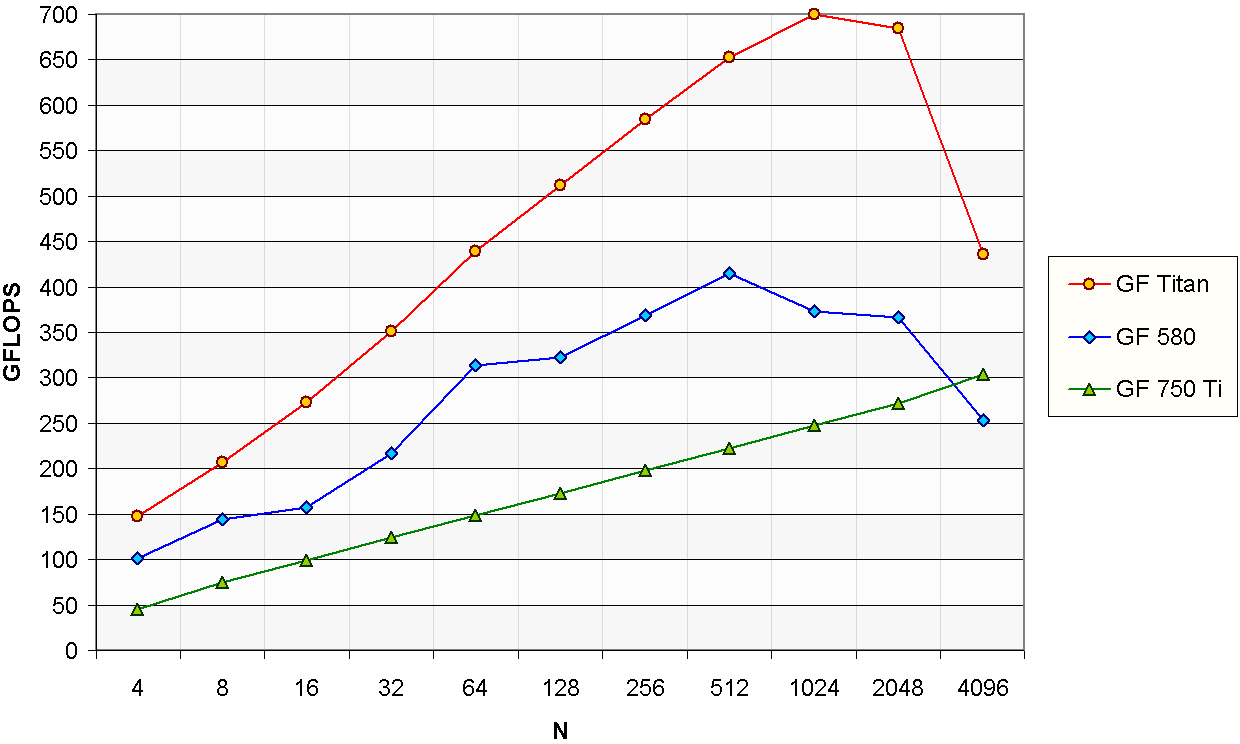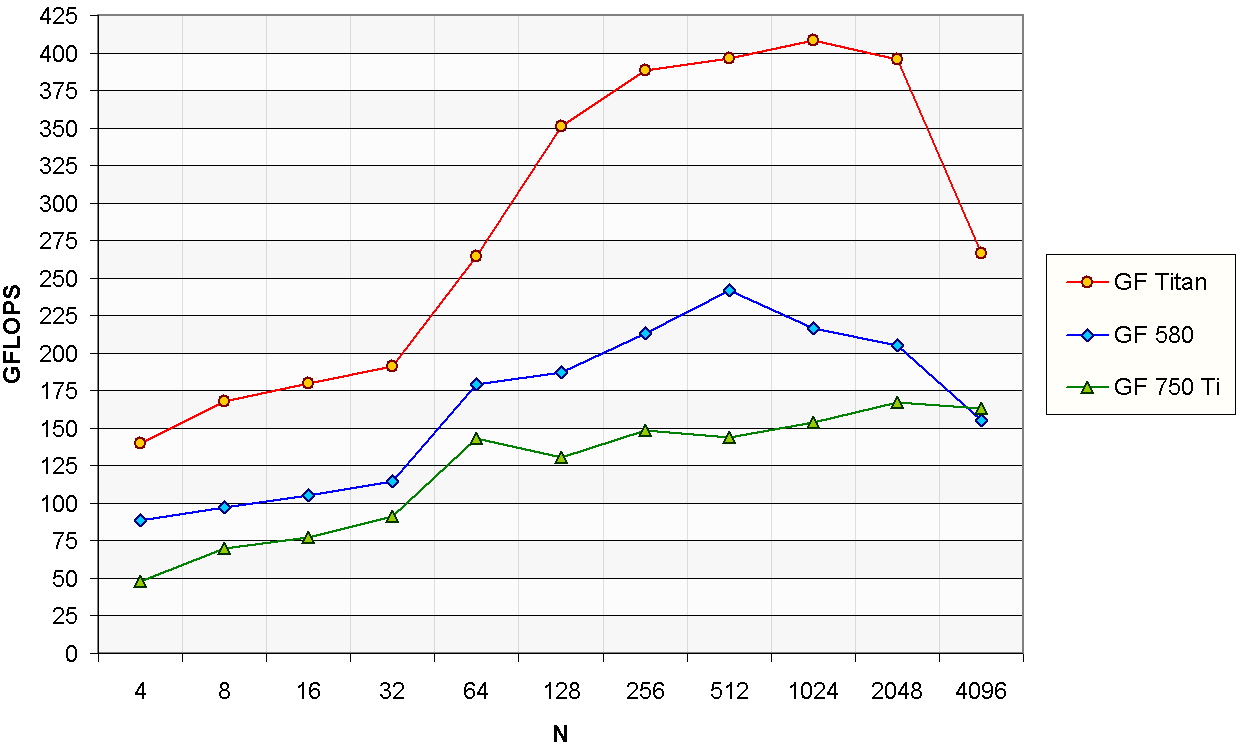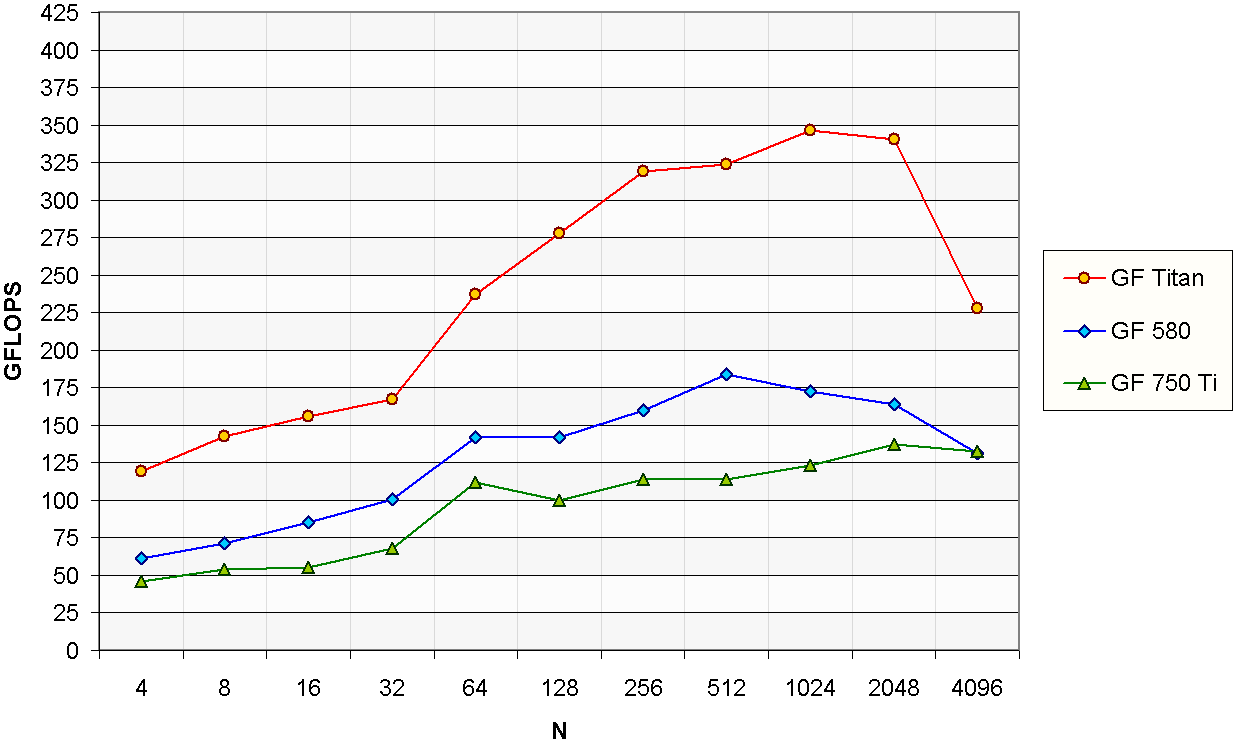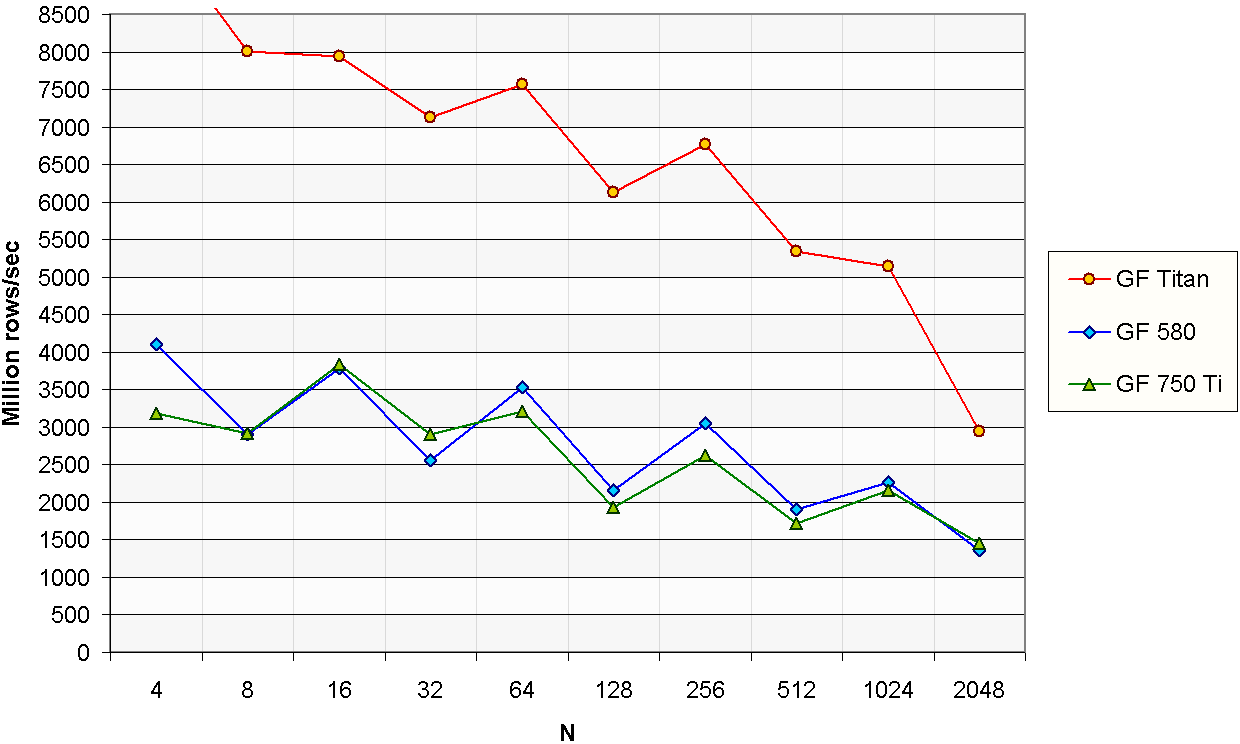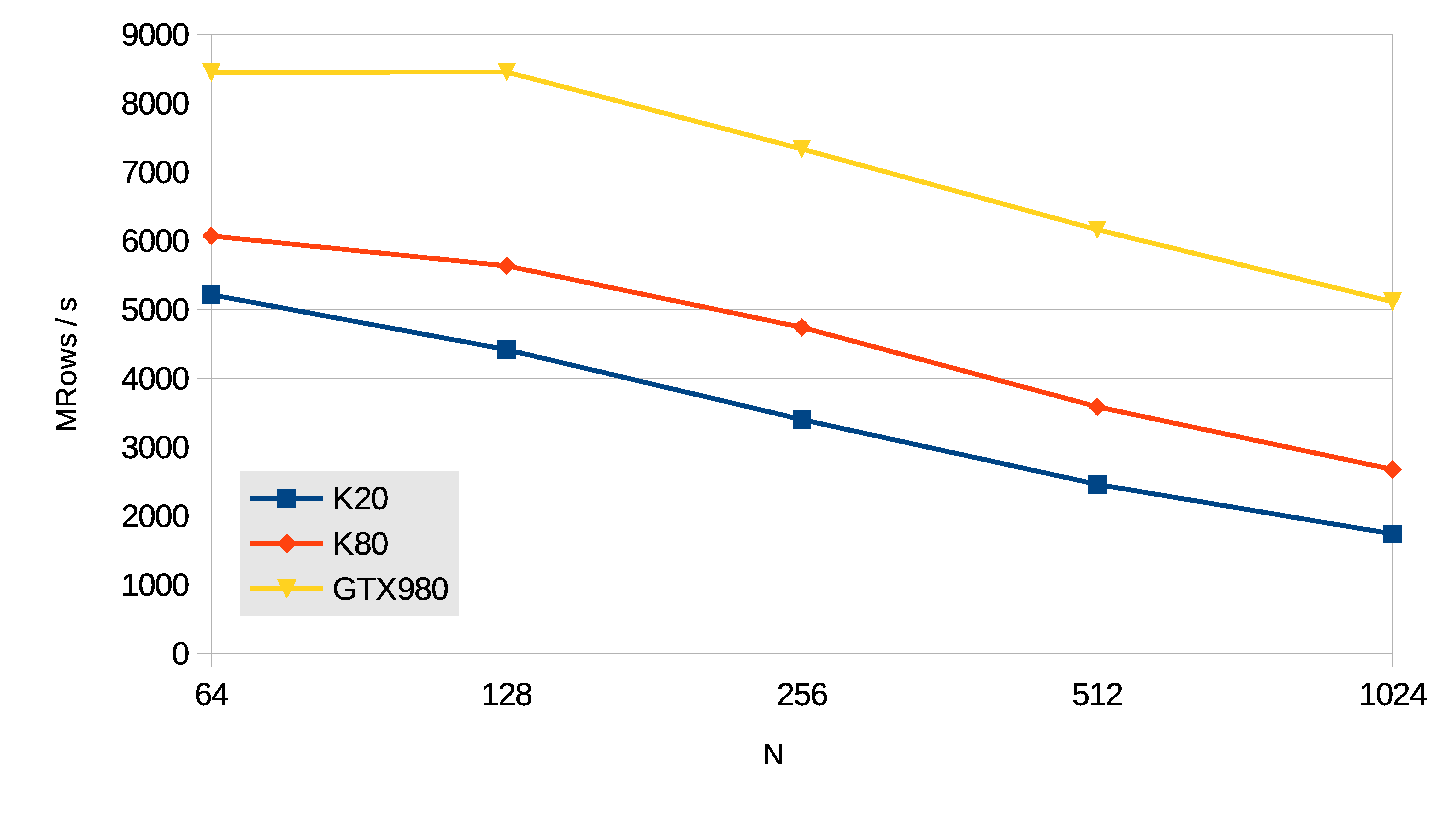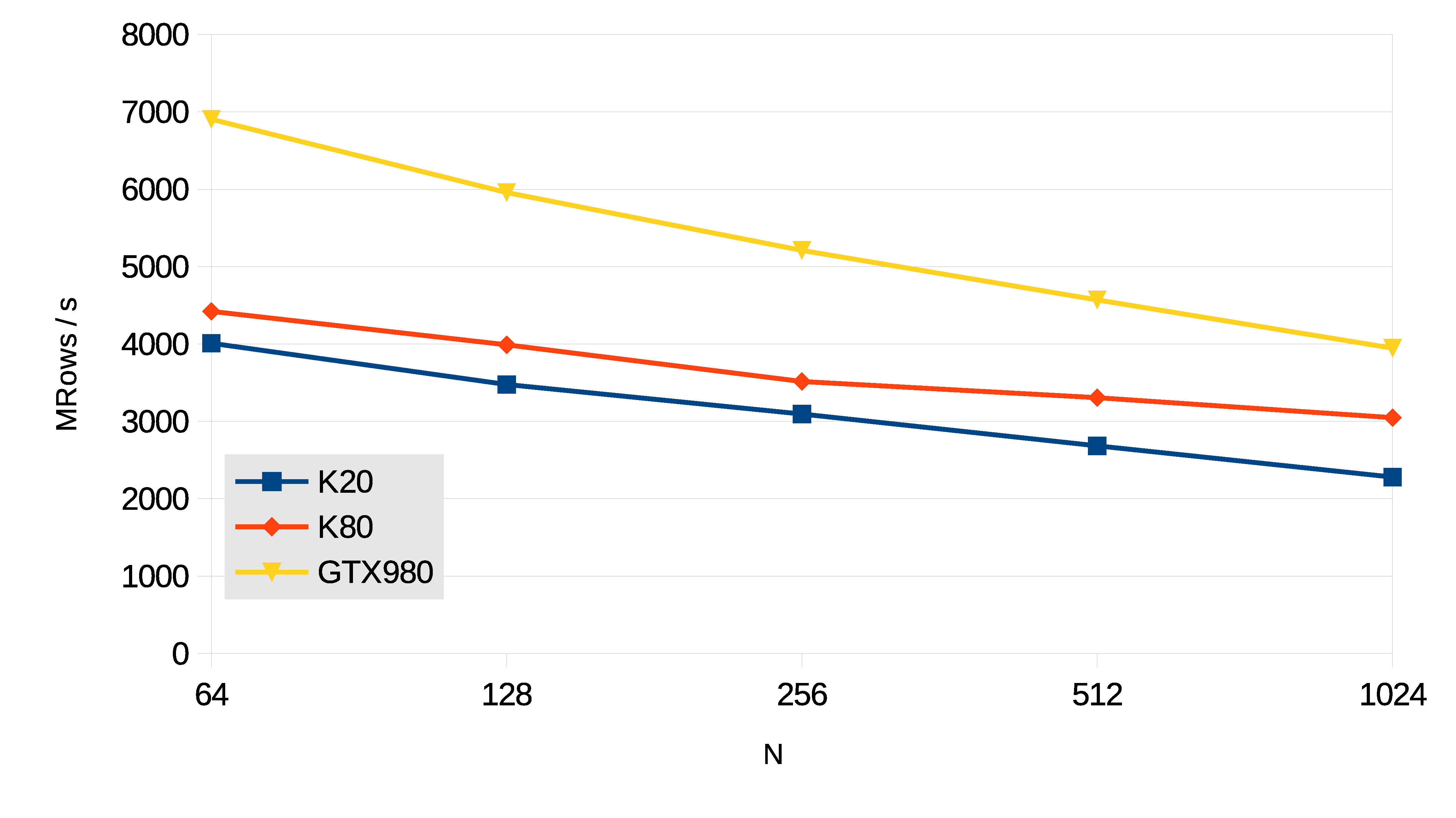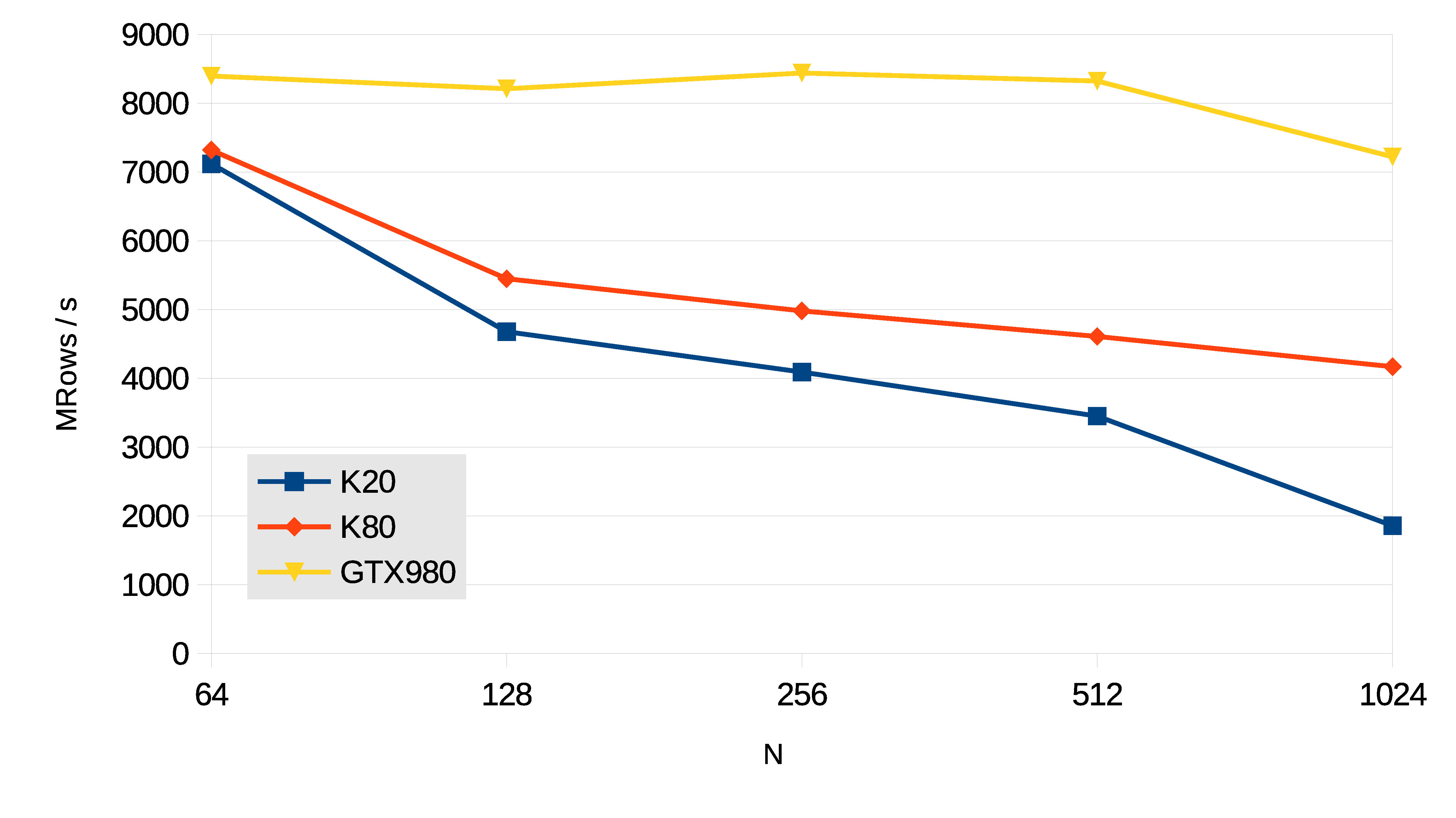Following we summarize the performance the different transforms supported by the library executed on several GPU architectures.
For a more detailed comparison including other well-known libraries, please check the
publications
in the documentation section.
The tests were evaluated in single precision using problem sizes in the range N = { 4, ... , 4096 } .
Batch execution is used to process 224 / N different problems, therefore,
as the input signal increases the number of batch executions decreases.
All the data resides on the GPU memory at the beginning of each test,
so there are no data transfers to CPU during the benchmarks.
Three different GPUs with different architectures were used in the tests:
| •
GeForce Titan | |
Kepler architecture | |
reference clocks |
| •
GeForce 580 | |
Fermi architecture | |
reference clocks |
| •
GeForce 750 TI | |
Maxwell architecture | |
Palit StormX Dual (1.2 GHz core, 6.0 GHz memory) |
Complex FFT
The FFT (Fast Fourier Transform) is used in many real-world signal processing applications.
For instance, image and video processing, pattern recognition or large number manipulation.
The performance of the complex FFT is expressed in GFLOPS through the commonly used expression:
GFLOPS = 5N · log2 ( N ) · b · 10-9 / t
where N is the size of the input, b is the total number of signals processed and t is the time in seconds.
Real FFT
In some domains, like audio processing, the input signal is known to be purely real.
Thus, taking advantage of this property, it is possible to perform an optimized version of the FFT with fewer operations and less memory bandwidth.
A expression similar to the previous one can be used for the real FFT:
GFLOPS = 2.5N · log2 ( N ) · b · 10-9 / t
The change in the first coefficient is given by the reduction on the number of operations,
which is approximately halved due to using real arithmetic instead of complex arithmetic.
Hartley Transform
The Hartley transform also has a real input, but in contrast to the real FFT, its output is also real.
Due to its simpler computation, it is used in some embedded and low power devices.
As far as we know there is no standardized expression for the Hartley transform,
therefore to offer a similar measurement we will use the same formula as the real FFT.
Discrete Cosine Transform
The DCT is widely used in lossy data compression due to its energy compaction properties.
This transform is also designed to work on purely real data.
Like in the case of the Hartley transform, as far as we know there is no standardized expression for the DCT,
thus we will use the same expression as in the real FFT.
Wang&Mou Tridiagonal Systems
The resolution of tridiagonal equation systems is used in many scientific computing applications,
like fluid simulation or the Alternating Direction Implicit method for heat conduction and diffusion equations.
The performance of the tridiagonal solver is measured in million rows per second, using the formula:
MRows / s = N · b · 10-6 / t
In this case N is the number of single-precision equations per tridiagonal system.

